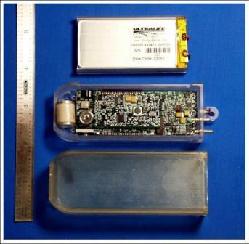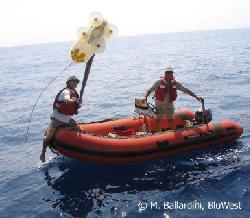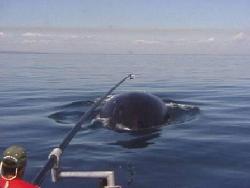DTAG: A Digital Acoustic Recording Tag
Definitive studies on the response of marine mammals to anthropogenic sound are hampered by the short surface time and deep-diving lifestyle of many species. A novel archival tag, called the DTAG, has been developed to monitor the behavior of marine mammals, and their response to sound, continuously throughout the dive cycle. The tag contains a large array of solid-state memory and records continuously from a built-in hydrophone and suite of sensors. The sensors sample the orientation of the animal in three dimensions with sufficient speed and resolution to capture individual fluke strokes. Audio and sensor recording is synchronous so the relative timing of sounds and motion can be determined precisely (Johnson & Tyack 2003).
- records audio, pitch, roll, heading and depth
- 6.6 GByte of memory
- 48-192 kHz audio sampling rate
- 50 Hz sensor sampling rate
- 1-4 hydrophone channels
- loss-less compression gives up to 24 hour recording
- rechargeable battery
- 300g weight in air
- suction cup attachment
- infra-red data offload
The DTAG is noninvasive and is attached to the whale with 4 silicone suction cups using a 12 m cantilevered carbon fiber pole or a handheld carbon fiber pole. With the use of the poles, the tag is delivered without encroaching over the flukes of the animal (Johnson & Tyack 2003). The tags are programmed to release from the animal by venting the suction cups at the end of the recording time if they are still attached. A VHF beacon in the tag aids in tracking and recovering the device. Once recovered, the tag data is off-loaded to a computer, checked for errors and archived (Tyack 2006).
Johnson, M. P. and P. L. Tyack (2003). "A Digital Acoutic Recording Tag for Measuring the Response of Wild Marine Mammals to Sound." IEEE Journal of Oceanic Engineering 28(1): 3-12.
Tyack, P. L., M. Johnson, et al. (2006). "Extreme diving of beaked whales." Journal of Experimental Biology 209: 4238-4253.




